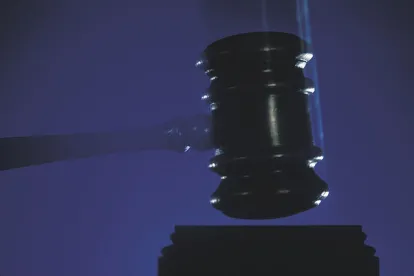Summary
Manufacturers of optical disk drives defeated electronics companies’, retailers’ and indirect purchaser plaintiffs’ conspiracy claims after seven years of litigation. On December 18, the US District Court for the Northern District of California issued simultaneous orders that granted summary judgment in favor of defendants after finding that the electronics companies, retailers and indirect purchasers failed to demonstrate evidence of injury and causation.
In Depth
Manufacturers of optical disk drives (ODDs) defeated electronics companies’, retailers’ and indirect purchaser plaintiffs’ conspiracy claims after seven years of litigation. On December 18, the US District Court for the Northern District of California issued simultaneous orders that granted summary judgment in favor of the defendants after finding that the electronics companies, retailers and indirect purchasers failed to demonstrate evidence of injury and causation. See In re Optical Disk Drive Products Antitrust Litigation, No. 3:10-md-02143 (Dkt. Nos. 2705-08, 2711). Samsung, Toshiba, BenQ Corporation, Philips and Lite-On IT Corporation were among the prevailing defendants.
The indirect purchasers were a class of customers who purchased products containing ODDs from 2003 to 2008. Electronics company Acer, an original equipment manufacturer (OEM), and its subsidiaries and retailers Circuit City and Radio Shack brought separate actions for purchases of ODDs from 2004 to 2010 (with the exception of the Foreign Trade Antitrust Improvements Act [FTAIA] issues that applied across the various plaintiff cases, the motions for summary judgment regarding Acer’s, Circuit City’s and Radio Shack’s claims are not discussed in this article). The ODDs at issue were components of a computer, purchased stand-alone for internal use in a computer, or designed to be attached externally to a computer. The plaintiffs alleged that defendants illegally agreed to fix prices for ODDs in violation of the Sherman Act, as well as California antitrust and consumer protection laws.
The defendants filed motions for summary judgment in the various plaintiff cases related to the FTAIA, vicarious liability for corporate parents, sufficiency of evidence supporting the alleged conspiracy and sufficiency of evidence regarding causation, injury and damages. Summary judgment is proper where there is no genuine dispute as to any material fact and the movant is entitled to judgment as a matter of law. Fed. R. Civ. P. 56(a). A material fact is one that may affect the case’s outcome. Anderson v. Liberty Lobby, Inc., 477 US 242, 248 (1986).
Foreign Trade Antitrust Improvements Act
The court first issued an omnibus order addressing the applicability of the FTAIA and vicarious liability for corporate parents—issues common to several of the motions for summary judgment. This article discusses only those arguments related to the FTAIA.
The defendants argued that certain sales were excluded from the purview of federal and state antitrust laws because they involved foreign commerce. The FTAIA excludes from the antitrust laws conduct that has no domestic effects or does not affect import commerce. US v. Hui Hsiung, 778 F.3d 738, 751 (9th Cir. 2015). The court analyzed three categories of sales: (1) ODDs sold abroad to customers abroad for incorporation into computers ultimately sold abroad; (2) ODDs sold abroad to foreign subsidiaries for incorporation into computers that were subsequently sold in the United States; and (3) domestic sales in the United States. Only category 1 and category 2 sales were at issue.
With respect to the category 1 sales, those sales did not constitute import commerce because they consisted entirely of foreign sales to foreign customers. The court also found that category 1 sales did not have domestic effects on US commerce and thus the FTAIA precluded the plaintiffs’ claims for those sales. The court reasoned that although these sales involved the same alleged price-fixing activity by US employees, the effects were foreign sales of ODD to foreign customers, because the finished products were sold outside the United States and there was not a “direct, substantial, and reasonably foreseeable effect” on US commerce. The court further reasoned that collusive conduct allegedly aimed at fixing ODD prices around the world was insufficient to directly affect US commerce. Even if the plaintiffs demonstrated domestic effects, however, they also must show that those effects “give rise to” a claim under the antitrust laws. That is, the plaintiffs had to show that price-fixing in the United States proximately caused injuries abroad. The plaintiffs’ argument that OEMs’ US-based procurement teams set domestic and foreign pricing practices for purchases of ODDs had been rejected in prior cases and, therefore, was inadequate to show causation.
With respect to the category 2 sales, the court found that the plaintiffs raised a genuine issue of material fact as to whether the sales constituted import commerce and that the FTAIA did not bar the sales under the domestic effects exception. As to import commerce, the court rejected the defendants’ argument that they did not directly import the ODDs into the United States; rather, it was the finished computers containing ODDs purchased abroad that ultimately made their way to the United States. The court reasoned that because the price-fixed ODDs lacked any use other than as components in the finished computers, it was sufficient that the finished computers containing allegedly price-fixed ODDs were imported into the United States. The court also explained that the defendants “acted with the knowledge that their products would arrive in the US,” including that the defendants had account managers based in the United States and knew that ODDs sold abroad would be incorporated into computers sold in the United States. This knowing and intentional sale of components to US-based procurement teams also constituted direct, substantial and reasonably foreseeable effect on US commerce under the domestic effects exception. The court, therefore, declined to grant the defendants’ motions for summary judgment on the category 2 sales.
Lack of Causation
Regarding summary judgment for the indirect purchasers, the court considered two primary issues: (1) the sufficiency of evidence supporting the alleged conspiracy, and (2) the sufficiency of evidence regarding causation, injury and damages. The court concluded that the plaintiffs adduced sufficient evidence to create a genuine issue of material fact as to the existence of a conspiracy targeting certain OEM customers, but that they failed to show a necessary element of their theory of damages: evidence of pass-through.
As to the first issue, the court reasoned that the indirect purchasers presented a “coherent narrative, suggesting a culture of collusion and longstanding relationships” between both low-level employees and senior executives and managers. However, this evidence was sufficient to support an alleged conspiracy targeting certain OEM customers only, rather than an industry-wide conspiracy. Accordingly, the evidence created a plausible inference of a conspiracy among the defendants and was sufficient to avoid granting the defendants’ motion for summary judgment on this issue.
As to the second issue, the court found that the indirect purchasers fell woefully short of their burden to produce evidence regarding causation, injury and damages. As indirect purchasers of ODDs, the plaintiffs were required to show that any overcharges resulting from the alleged conspiracy were passed on from direct purchasers through the distribution chain. The indirect purchasers in this case advanced a theory of 100 percent pass-through of inflated pricing from direct purchasers to retail customers. The plaintiffs’ theory thus required them to account for the decision-making of resellers, distributers and manufacturers at every stage of the supply chain.
The indirect purchasers’ damages theory posited that the alleged conspiracy slowed the otherwise natural decline in prices in the industry and that the overcharge was passed on in the form of lower quality finished products or component parts rather than higher prices for the finished goods. Although the court certified a class of indirect purchasers on this theory, it found insufficient evidence to support the theory on the merits.
After considering the evidence, the court found that the indirect purchasers’ theory did not play out in reality. The court reasoned that actual evidence of pass-through was critical at the summary judgment stage. The plaintiffs’ expert analysis and empirical studies were not a substitute for actual evidence of direct purchasers’ behavior regarding the alleged overcharge. Nor would evidence of collusion, impact or the defendants’ stipulations regarding the pass-through rates for unrelated products suffice.
Notably, the plaintiffs could not produce any evidence showing that a manufacturer had ever reduced the quality of a finished product to offset higher ODD prices. To the contrary, declarations from the key OEM customers at issue indicated that ODD prices were not passed on with any consistency or uniformity. Therefore, without actual evidence of decision-making that demonstrated that the alleged higher prices were passed on to downstream customers, the plaintiffs failed to create a genuine issue of material fact as to pass-through.
Implications
The court’s ruling on the FTAIA issues demonstrates the continued uncertainty that defendants face in limiting the volume of sales for which plaintiffs claim federal and state damages under US law. This is particularly the case with hybrid sales—those sales where foreign defendants sell components to foreign entities for incorporation into finished goods abroad, but where the finished goods ultimately make their way back into US commerce. In recent years, the United States has seen an uptick in the number of criminal investigations and follow-on civil litigation involving cartels to fix prices for component parts that are incorporated into finished goods sold in the United States. While courts have reached different outcomes on such sales, defendants increasingly face challenges in dismissing these claims at the motion to dismiss and even summary judgment phases of litigation due to the fact-specific inquiries into these hybrid sales.
The ODD case further illustrates a defendant’s divergent strategies when faced with conspiracy claims: to defend the claims in litigation or to pursue settlement. Several industry manufacturers agreed to settle the conspiracy claims brought against them. To date, settlements with indirect purchasers total more than $175 million. On the other hand, the litigating ODD defendants faced increased time, expenses and business distraction, but ultimately prevailed against the indirect purchasers’ claims. Companies confronted with claims of collusion should consult legal counsel to carefully weigh potential defenses and the strength of arguments at various stages of litigation. Viable defenses against antitrust claims may get stronger as litigation continues, particularly at the class certification and summary judgment phase when plaintiffs face a higher burden than merely pleading a plausible claim to get past a motion to dismiss and substantial discovery has taken place.





 />i
/>i

